Tree kangaroos are found only in the rain forests of Australia, West Papua, and Papua New Guinea. Six of ten species are found in Papua New Guinea, in some of the last undisturbed rain forest habitat in the world. The Matschie's tree kangaroo is endemic to the Huon Peninsula on the northeast coast of Papua New Guinea.
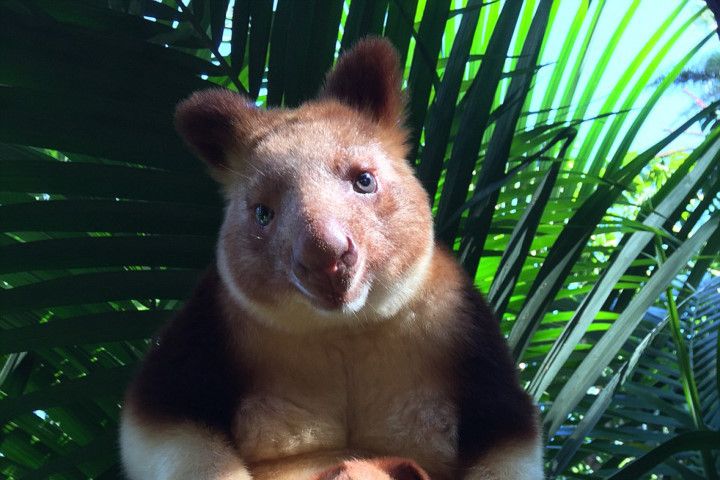
Matschie's tree kangaroos live in mountainous cloud forests at elevations of up to 11,000 feet. They spend most of their time in trees. Tree kangaroos primarily eat tree leaves. They also consume flowers, grass shoots, ferns, moss, and bark.
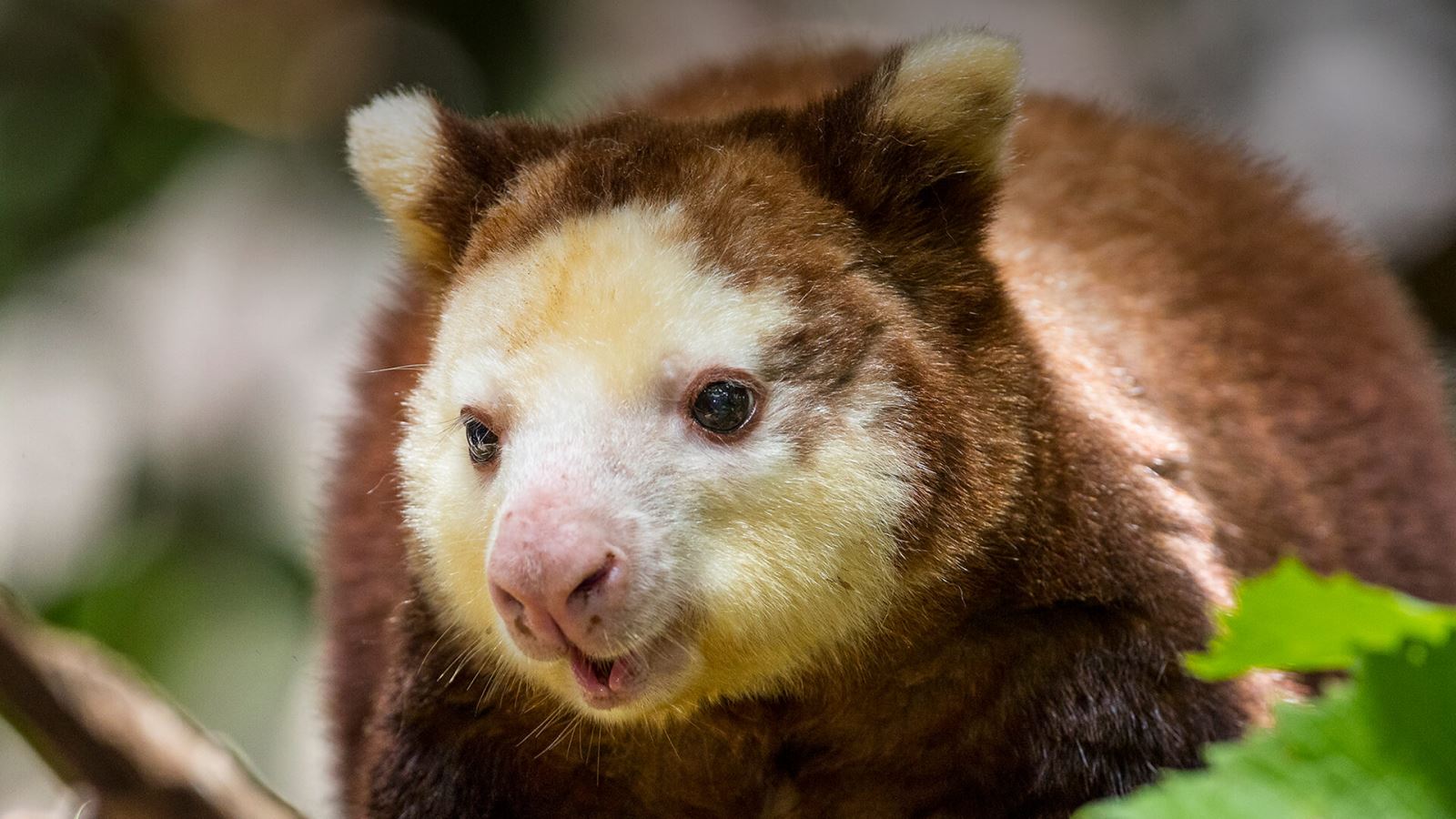
Female tree kangaroos give birth to one offspring after a gestation period of approximately 44 days. After birth, the fetus-like young, called a joey, crawls to a teat located inside the mother's pouch, where it attaches itself to nurse. The majority of the infant's development occurs during this lactation phase.
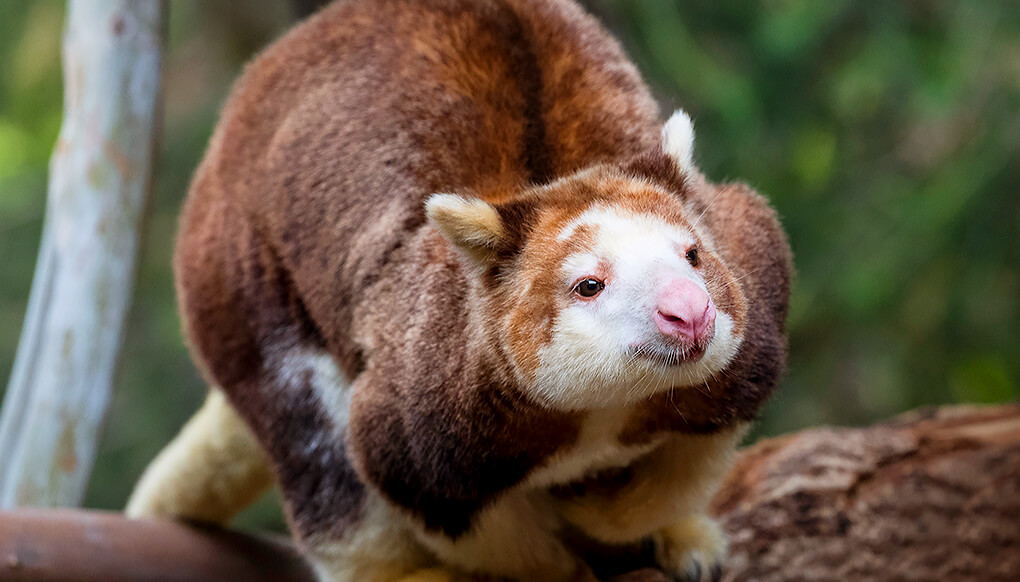
The joey remains in the pouch for about ten months. The mother will clean her pouch and groom the infant often during this phase. After the infant initially leaves the pouch at eight months, it will continue to return to the pouch to nurse. This “in and out” phase lasts for one or two months. During the final phase, the young still nurses but never climbs completely into the pouch.
Young tree kangaroos are weaned when they are approximately 13 months old. They stay with their mothers until they are about 18 months old, when they disperse and establish a home range.
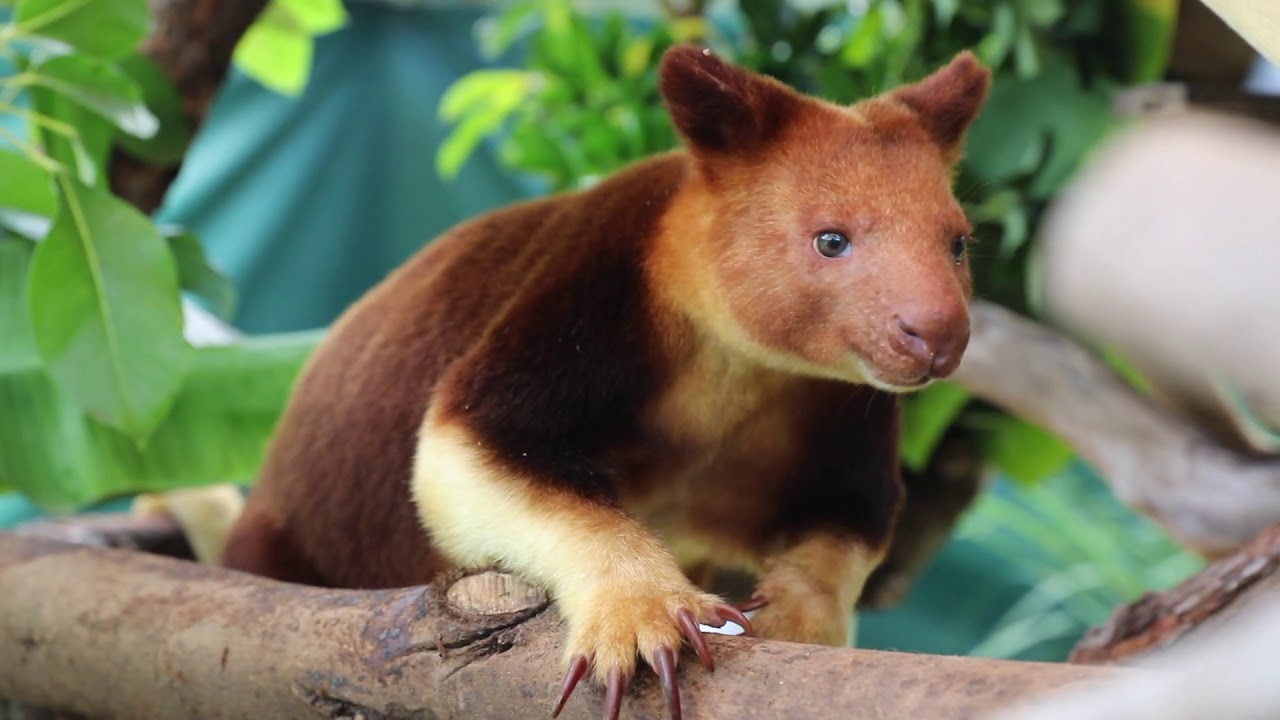
Little is known about the social behavior of wild tree kangaroos. Researchers believe that Matschie's tree kangaroos are fairly solitary animals. Females and males have non-overlapping home ranges, but a male's range will overlap several females' range.
Researchers also believe that Matschie's tree kangaroos are polygamous and that males interact with several females. Males, however, appear not to establish harems, and females remain independent. The only strong social bond these animals form is between mother and offspring.
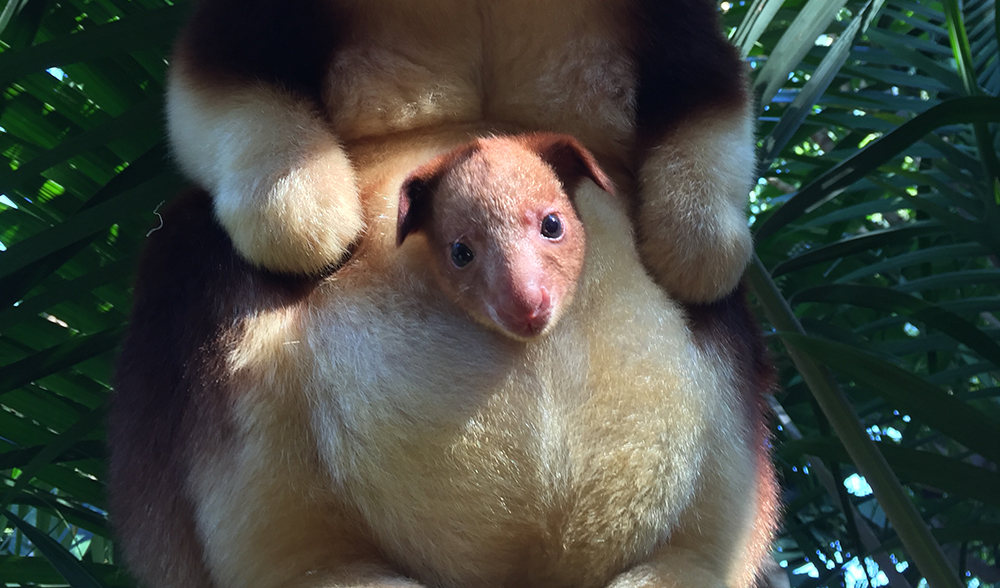
In captivity, if females are isolated from all other animals after becoming pregnant, offspring almost always survive. These observations show that Matschie's tree kangaroos are mostly solitary animals.
According to nationalgeographic











